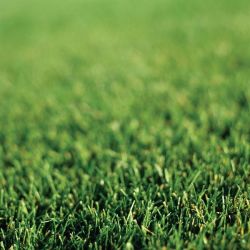Rockaway Community Park
Rockaway Community Park
The name Rockaway was probably derived from the Delaware or Chippewa Native American Language words for sandy place (lekau akie). The region became known as Rockaway after it was colonized by Europeans during the seventeenth century.
The Canarsie tribe, who originally inhabited the area, sold what was mostly barren land to English Captain John Palmer in 1685. The sale was memorialized in a deed issued by Governor Thomas Dongan. Disappointed with his purchase, Palmer sold the land in 1687 to a prominent ironmaster from Long Island—Richard Cornell, whose descendant Ezra founded Cornell University in 1865.
The Cornell family owned the land until 1808, when it was partitioned into 46 parcels that were eventually sold to outsiders. In 1833, following an outbreak of cholera, a group of wealthy New Yorkers organized to purchase much of the property and build exclusive resorts as an escape from disease. By 1864, ferry service began, transporting inhabitants from Canarsie to the seaside in Rockaway. The introduction of rail service to the peninsula after 1869 further hastened development of hotels and summer residences there. Over the course of four decades or more, Rockaway peninsula became a beachfront resort town, with hotels, restaurants and summer housing. During the 1890’s, a variety of amusement parks were built. In 1898, the Village of Rockaway Park was incorporated into New York City. The peninsula continued to serve as a summer resort until the end of World War II.
Edgemere, the neighborhood surrounding Rockaway Community Park, extends from Beach 32nd Street to Beach 56th Street, from the Atlantic Ocean to Jamaica Bay. In 1892, Frederick J. Lancaster acquired the region and formed the Sea Beach Improvement Company to sell shorefront property. Lancaster originally named the area New Venice, in reference to Jamaica Bay’s marshland and natural canals. By 1895, the developer had completed the Hotel Edgemere and several cottages, which he operated until 1919. Around 1925, Edgemere began to emerge as the Rockaways’ commercial hub.
In 1948 and 1955, Parks acquired the property that is now Rockaway Community Park through assignment of city land and the purchase of privately owned land. Previously known as Edgemere Park, it was changed to Rockaway Community Park in 1971 by local law. Projecting into Jamaica Bay at a northeasterly angle, the area is generally bounded by Conch Basin, Norton Basin, the bay itself, Sommerville Basin, and 54th Avenue. Another Parks property, Dubos Point Wildlife Sanctuary, is visible westward across Sommerville Basin.
Rockaway Community Park caters to the adjacent Ocean Bay Apartments, formerly called the Edgemere Houses, and the surrounding community with a host of recreational options, including several tennis, basketball and handball courts, and two baseball fields.
Within the park’s natural areas, a variety of trees grow, namely Black pine, Honey locust, Willow oak, Crabapple, and Russian olive. The majority of the park’s acreage is currently inaccessible as it is returning to its natural state following years of use by the Sanitation Department. Located near several nature preserves, sanctuaries, and the Gateway National Recreation Area, Rockaway Community Park is being restored as part of the Parks mission to protect the wildlife and natural habitat of Jamaica Bay.
Check out your park's Vital Signs
Clean & Safe
Green & Resilient
Empowered & Engaged Users
Share your feedback or learn more about how this park is part of a
Vital Park System
Contacts
General Inquiries: (718) 318-4000

